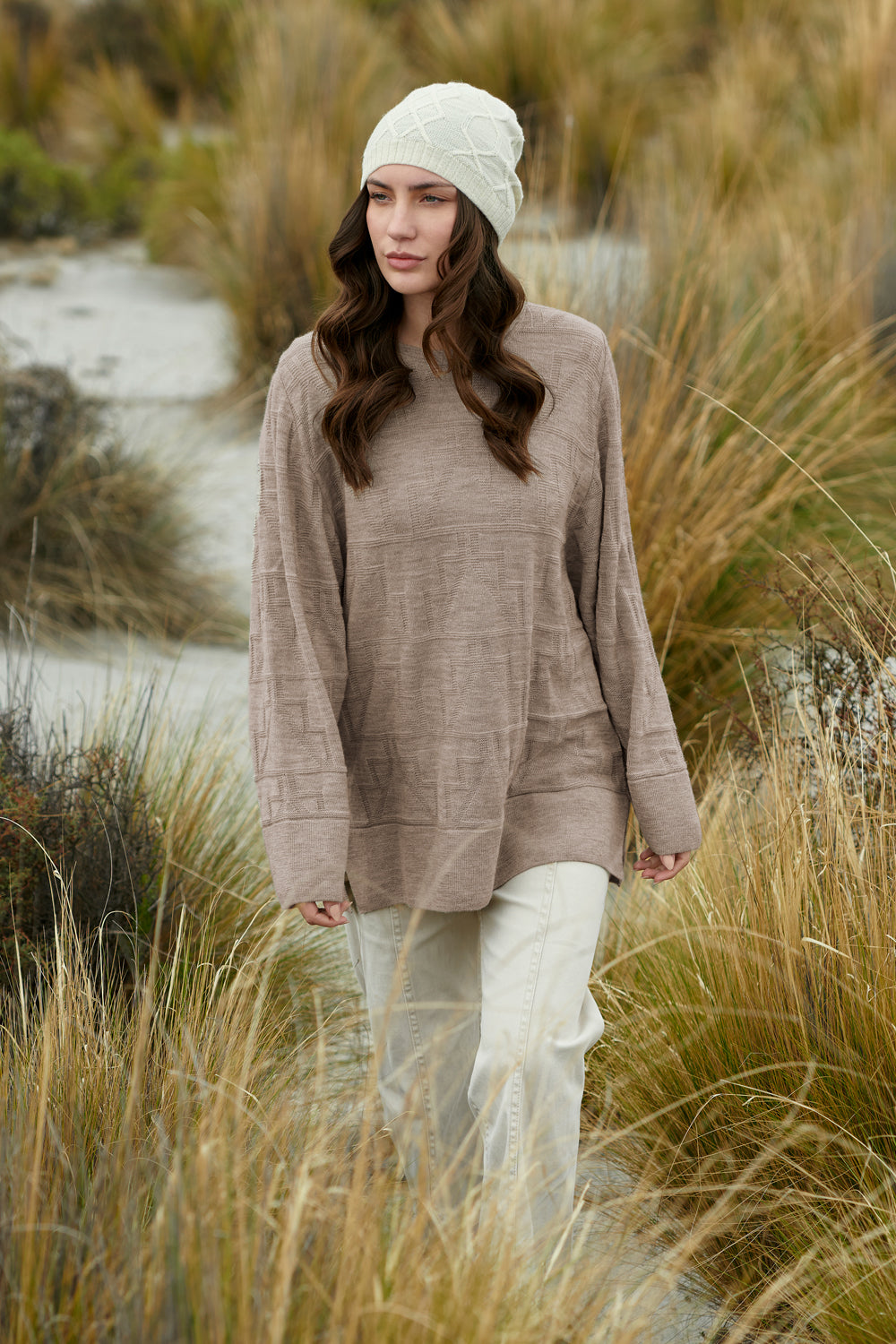Alpacas are indigenous from the Peruvian highlands. There are an estimated 4 million Alpacas in South America, and about 95% of them are found in the Southern regions of Perú. Alpacas (lama pacos) are members of the South American camelid family which also includes Vicuñas, Guanacos and Llamas, to which they are closely related.
Alpacas are living at altitudes ranging from 8,202 to over 14,763.78 feet above sea level for thousands of years, withstanding extreme weather conditions which can vary from 86°F to -4°F in a single day.
There are two types: Huacaya and Suri, wich differ from each other in both their appearance and the characteristics of their fibre.

Alpaca Huacaya
Is the predominant Alpaca type. Its bulky, yet fine fleece offers the widest range of natural shades. Huacayas have a harmonious shape giving it an appearance of strength and grace.
Scientific name : Alpaca (Lama Pacos)
Population : 4 million
Habitat : Perú, Chile and Bolivia

Alpaca Suri
Is the least predominant Alpaca type. It has a curly, shiny and silky fibre. Its fleece comes in a narrow range of pale, natural shades, such as white, fawns and light browns. The Suri has an eye-catching shape and appearance thanks to its long hair.
Scientific name : Alpaca (Lama Pacos)
Population : 400,000
Habitat : Perú, Chile and Bolivia
Alpacas have strong, silky fibres with outstanding thermal insulation characteristics owing to the microscopic air pockets they contain. These insulating air pockets enable alpaca garments to provide a sensation of warmth or freshness. The fibre is also elastic and non-flammable
Here are some of the most notable characteristics of alpaca fibre:
• Alpaca fibre is sorted into 32 natural colours which are derived from the basic shades (white, fawn, brown, grey and black). This generous range of hues makes Alpaca a very popular choice with designers all over the world.
• Alpaca fibre is an exceptional thermal insulator. and may be seven times as insulating as sheep’s wool.
• It is three times as strong as sheep’s wool.
• It is comparable to other special, high quality fibres such as Cashmere, Angora and Mohair.
• It is soft to the touch owing to the cellular structure of the fibre, giving Alpaca textiles a smooth, delicate handle difficult to obtain in fabrics of other materials.
• It has a natural lustre which imparts a sophisticated and elegant appearance to garments made from 100% alpaca.
• It is an extremely versatile fibre that can be used in knitwear, woven garments, accessories and handcrafts.









